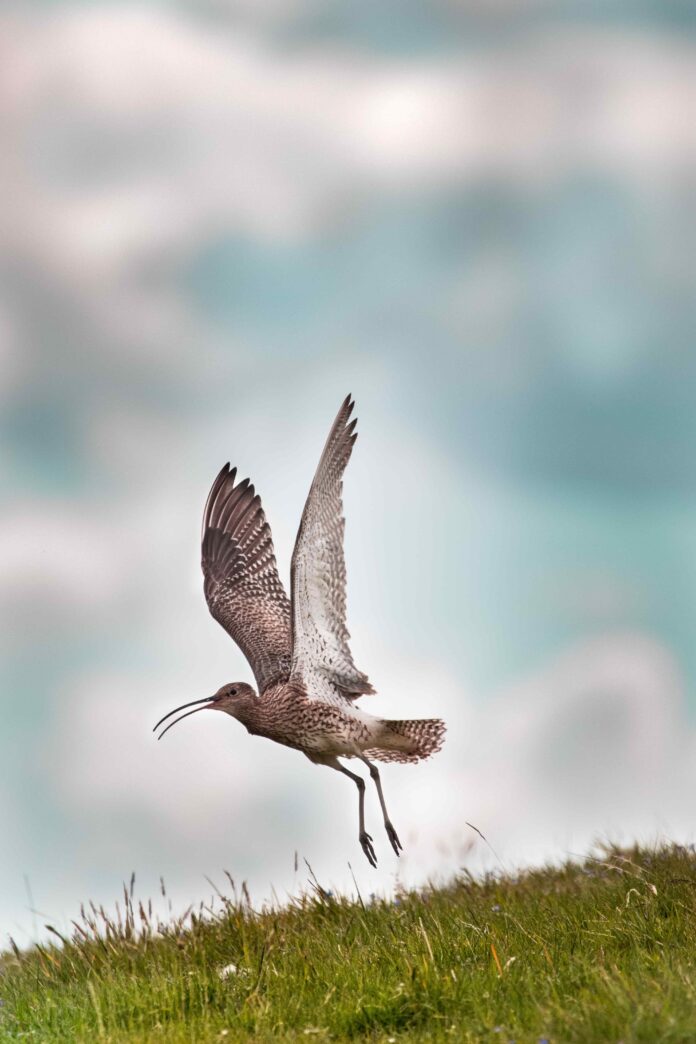Saving elusive Curlew nests and chicks with the help of drones and farmers in Wales
Researchers from the Game & Wildlife Conservation Trust (GWCT) Wales have developed a new and highly advanced drone technique that is revolutionising practical curlew conservation by allowing them to locate the nests of this elusive wader and work with farmers to protect the chicks from being killed by machinery or predators.
The drone work has been developed by GWCT over five years of surveying various species across Wales, including deer, brown hare, grey squirrels, feral goats, grey seals, partridge, terns…and curlew!
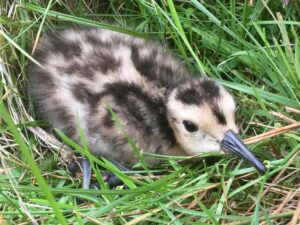
Using a combination of thermal and zoom cameras operated from a drone, the nests can be located very quickly and accurately, while causing no disturbance to the birds.
GWCT conservationists and curlew experts James Warrington and Katie Appleby have spent the breeding season working with farmers, locating and protecting curlew and other wading bird nests, and moving chicks to safety before they harvest crops or cut fields.
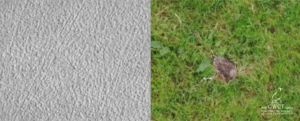
Curlew numbers in Wales have declined sharply and it is predicted that it may become extinct as a viable breeding population within 10 years.
To help curlew, GWCT is part of a 3-year partnership project called ‘Curlew Connections Wales’, which aims to locate and monitor breeding curlew by working with farmers and the local community to find and protect nests from predation, alongside conducting predation management, across three sites in Wales.
Through this work in Montgomeryhire and North Radnorshire the GWCT has been able to show the viability of drones as a research tool that causes no disturbance to adults and importantly, leaves no scent trails that can lead predators to the nests, proving the success of methodology that we have been developing for five years.
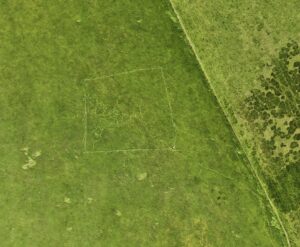
GWCT staff have also built relationships with many farmers over the years and are regularly called upon to offer this service as a practical conservation tool. Working with farmers, through the Trust’s Curlew projects, has been paramount to the development of this research as they allow GWCT Wales access to their land and show a passionate interest in and actively take part in the conservation work. Without farmers none of this research would have been possible, or as successful as it has been.
VIDEO: GWCT Wales Drone Surveying Eurasian Curlew
James Warrington, GWCT Projects Officer for Wales, explains: “Curlew nests are notoriously hard to find as adults rarely fly directly to the nest but opt to land away from the area and walk in slowly and usually through cover.
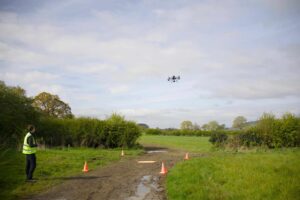
To pinpoint nests through ground observation takes a lot of time, hours or days, as observers need to calculate approximate areas where the nest may be and then search that area, this leaves trails and scent that predators can see, smell and use.
“Using the drone, we can find a nest in five minutes without setting foot in the field.
“Our team can then help farmers to protect located nests with electric fencing, move any chicks from fields where work is about to take place, or carry out other important conservation or predation management work.
“Not only does this save us a lot of time to get on with other important tasks, but the farmer can also get on with the hay cutting knowing no curlew chicks are being harmed.”
The GWCT Wales drone team is now working on expanding the technology and liaising with external partners to develop AI recognition of individual species from the air. The team is also due to commence upland bird surveys in the north of England, and will follow curlew chicks and adults ringed this summer to their coastal wintering grounds to monitor them there.
Hours of footage and images collected will also be analysed by researchers trying to learn more about the nesting curlews’ habitat.
“By studying the patterns in the fields made by the chicks, which are only visible in aerial shots, we can look at how far they have to water, to hedges and other features that offer cover,” James explains.
“It will also help us understand how avian predators see the landscape and work out where chicks are. Having this knowledge is the first step in figuring out how to better protect curlew from corvids and raptors.”
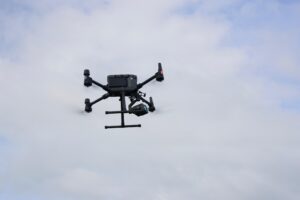
Experts on the ground
GWCT’s Director for Wales, Lee Oliver, says: “The results of all our surveys using the drone have been exceptional.”
The drone technology being used is the most advanced available, and includes thermal camera, zoom camera, and laser range finder with pin-point location function.
Because GWCT Wales’s drone has 200 times zoom, it does not have to be directly above the nest area and can be in a neighbouring field. The still images shown here were taken from 60 meters in altitude and 100 meters away from the nest.
With the laser range finder on the drone a point can be placed on the hand controller screen, and from that we get very accurate location co-ordinates. This then enables researchers to walk directly to a nest using a handheld GPS device.
“It has taken years to get to where we are now,” says Lee.
“For a long time, drone technology was not advanced enough to do this without disturbance to adults. Our work shows that drones are indeed able to find nests, and more importantly do not disturb sitting birds in the process.”
“To also have a team on the ground who are experts within curlew conservation and very experienced in working with these birds, makes all the difference.”
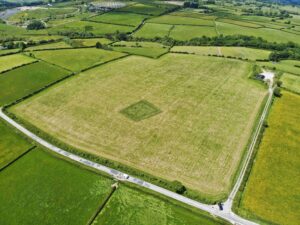
Through the Curlew Connections Wales project, farmers and landowners willing to delay any planned cutting can receive compensation from the Welsh Government’s Nature Networks Fund in the three ‘Important Curlew Areas’ covered by the project.
Andy Owen, a farmer in Montgomeryshire (Important Curlew Area 9), says: “I was privileged enough to have three pairs of curlew nesting on my land. This year they were late nesting, and the grass was covering everything which made it difficult to see the nests, then along came Katie and James with the drone.
“This is an amazing bit of kit which located the adult curlew and chicks so they could be left quiet to incubate and feed. It was amazing to see the chicks when they arrived and follow their progress, without the use of the drone it would have been impossible.
“As the harvest was delayed it came into use again following the chicks as they started moving fields.
Before cutting they came and flew the drone over to make sure each field was clear of curlew chicks prior to cutting and all went to plan.
“The ability of the drone to locate and zoom in to identify was imperative to the successful breeding and fledging to which I was proud to be a part of.
Katie Appleby, Curlew Connections Project Officer for Wales, says: “Without the help of farmers like Andy, curlew would not stand a chance and we would not be able to do the work we do and are so passionate about.
“The future for curlew in Wales is looking bleak, but there is a glimmer of hope that through the dedication and hard work of these farmers, we might just be able to offer a future for this iconic bird in Wales.”
Help keep news FREE for our readers
Supporting your local community newspaper/online news outlet is crucial now more than ever. If you believe in independent journalism, then consider making a valuable contribution by making a one-time or monthly donation. We operate in rural areas where providing unbiased news can be challenging. Read More About Supporting The West Wales Chronicle






















